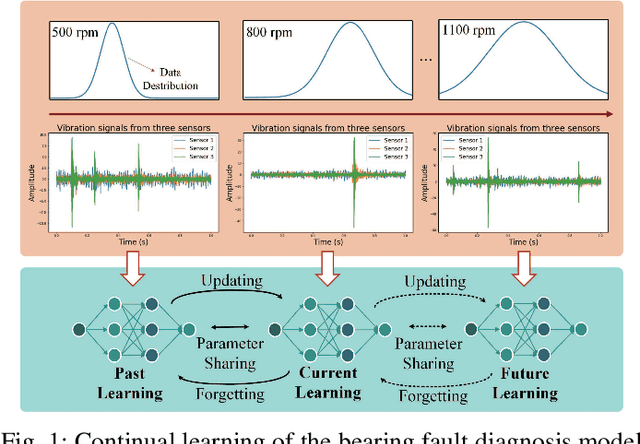Suyan Dai
Edge-Cloud Collaborative Motion Planning for Autonomous Driving with Large Language Models
Aug 19, 2024Abstract:Integrating large language models (LLMs) into autonomous driving enhances personalization and adaptability in open-world scenarios. However, traditional edge computing models still face significant challenges in processing complex driving data, particularly regarding real-time performance and system efficiency. To address these challenges, this study introduces EC-Drive, a novel edge-cloud collaborative autonomous driving system with data drift detection capabilities. EC-Drive utilizes drift detection algorithms to selectively upload critical data, including new obstacles and traffic pattern changes, to the cloud for processing by GPT-4, while routine data is efficiently managed by smaller LLMs on edge devices. This approach not only reduces inference latency but also improves system efficiency by optimizing communication resource use. Experimental validation confirms the system's robust processing capabilities and practical applicability in real-world driving conditions, demonstrating the effectiveness of this edge-cloud collaboration framework. Our data and system demonstration will be released at https://sites.google.com/view/ec-drive.
Continual Learning with Diffusion-based Generative Replay for Industrial Streaming Data
Jun 22, 2024



Abstract:The Industrial Internet of Things (IIoT) integrates interconnected sensors and devices to support industrial applications, but its dynamic environments pose challenges related to data drift. Considering the limited resources and the need to effectively adapt models to new data distributions, this paper introduces a Continual Learning (CL) approach, i.e., Distillation-based Self-Guidance (DSG), to address challenges presented by industrial streaming data via a novel generative replay mechanism. DSG utilizes knowledge distillation to transfer knowledge from the previous diffusion-based generator to the updated one, improving both the stability of the generator and the quality of reproduced data, thereby enhancing the mitigation of catastrophic forgetting. Experimental results on CWRU, DSA, and WISDM datasets demonstrate the effectiveness of DSG. DSG outperforms the state-of-the-art baseline in accuracy, demonstrating improvements ranging from 2.9% to 5.0% on key datasets, showcasing its potential for practical industrial applications.
 Add to Chrome
Add to Chrome Add to Firefox
Add to Firefox Add to Edge
Add to Edge